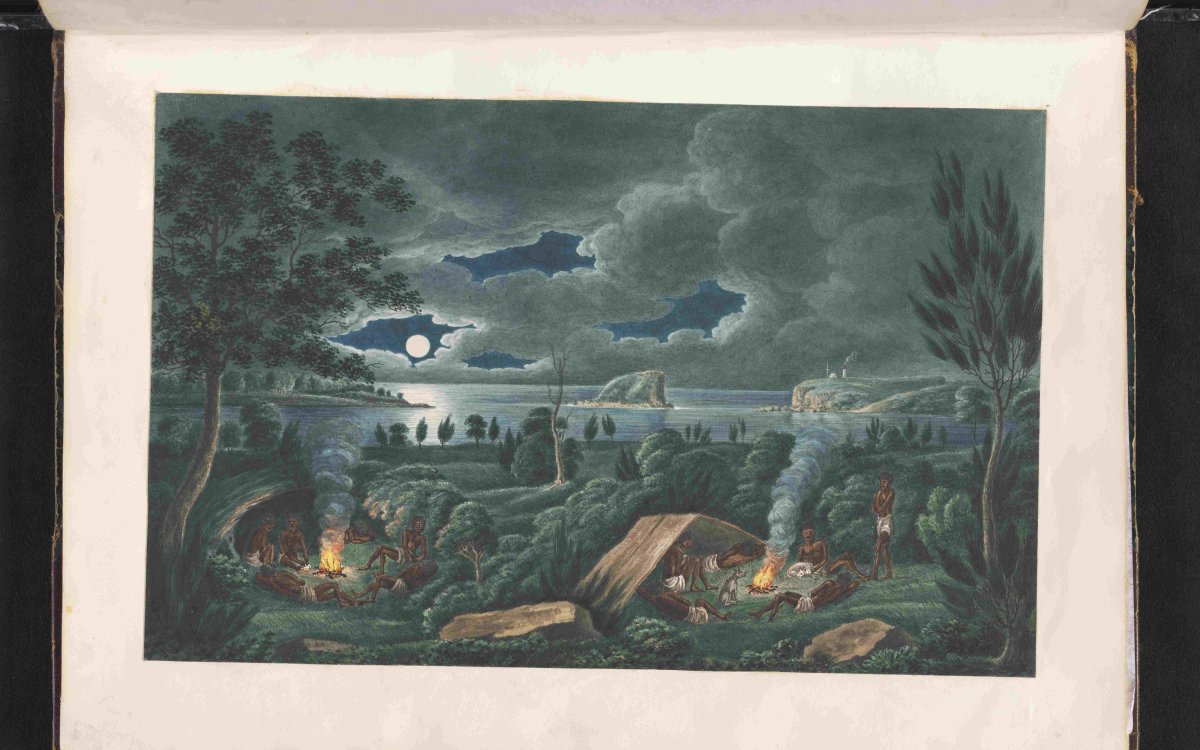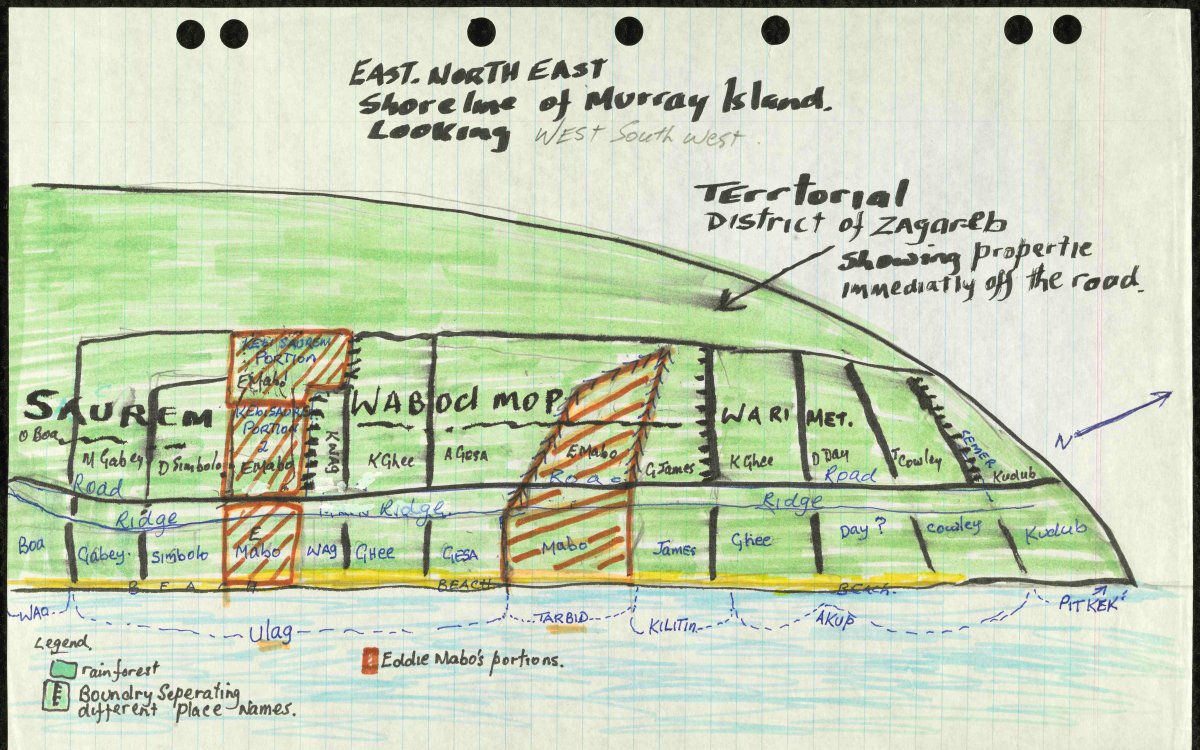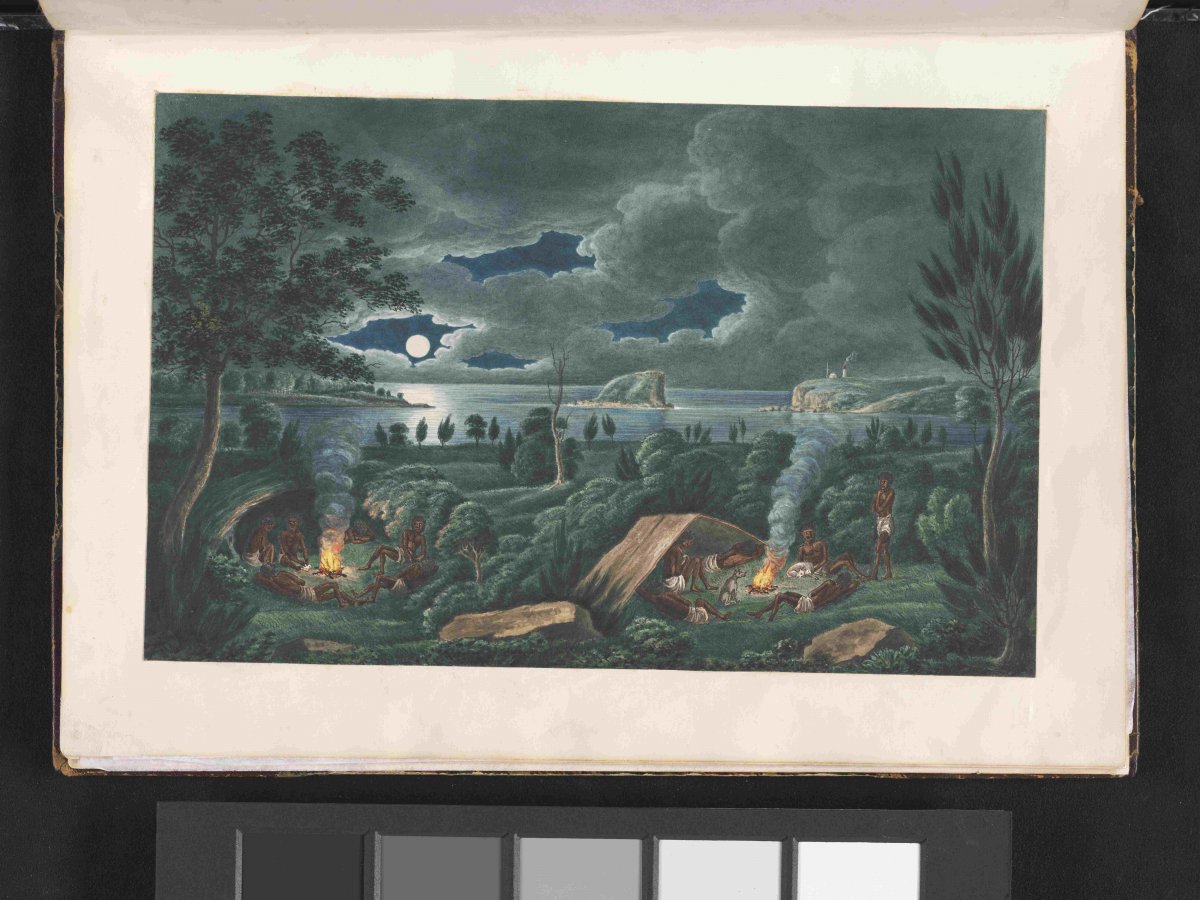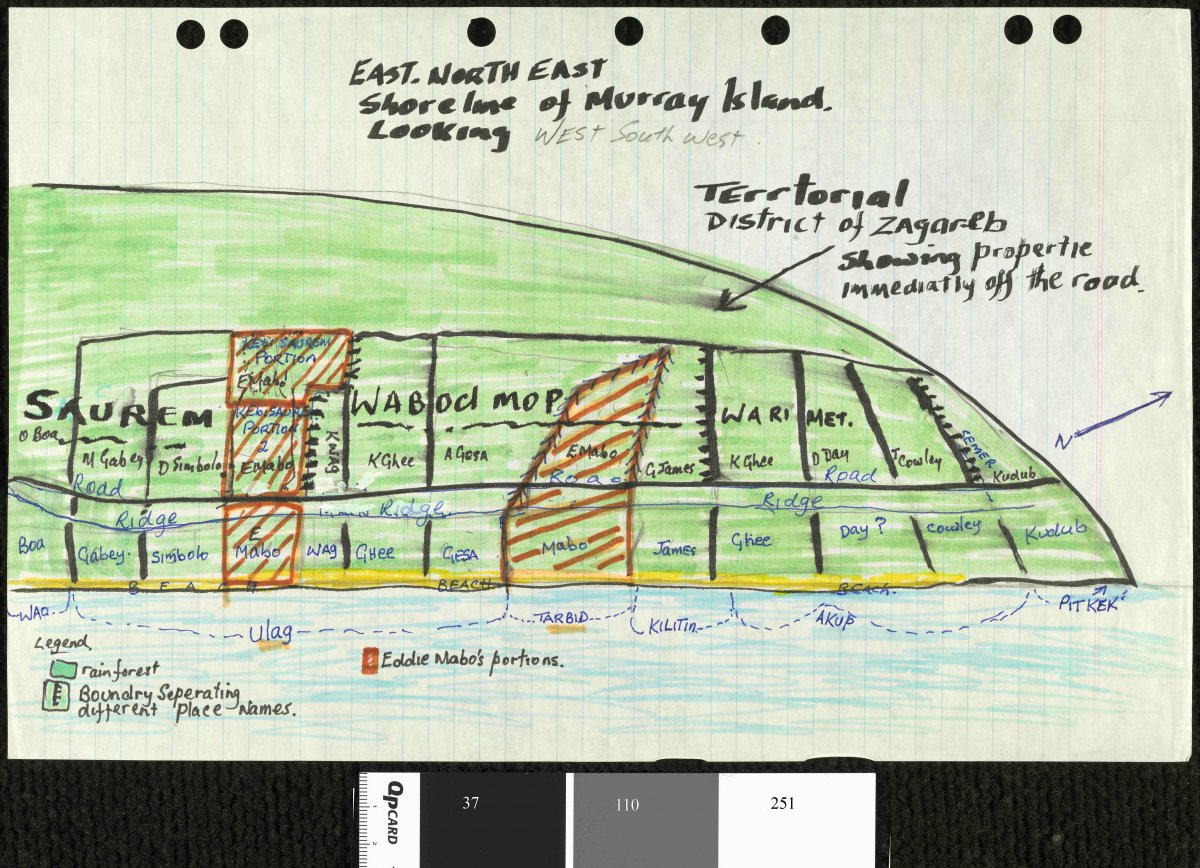Terra nullius—meaning land belonging to no-one—was the legal concept used by the British government to justify the settlement of Australia. Focusing on the work of Bruce Pascoe, this theme explores evidence of Indigenous agriculture and settlement in pre-colonial Australia—information that challenges the terra nullius claim.
Terra Nullius
While historians debate how and when the terra nullius legal concept was used to justify the colonisation of Australia, it is likely that Cook considered that the land belonged to no-one. To Cook, Aboriginal people were ‘uncivilised’ hunters and gatherers—he did not see evidence of settlement and farming in a form he recognised. Although many British colonisers shared Cook’s views, some believed that the Indigenous people were rightful owners of the land. In 1835, for example, John Batman negotiated an agreement with the Wurundjeri elders in Victoria to take ownership of their land in exchange for goods. The colonial government declared the treaty void, as it was based on the premise that the Wurundjeri people owned the land. Such an acknowledgement would have been inconsistent with terra nullius and the basis for British colonisation.
Terra Nullius
While historians debate how and when the terra nullius legal concept was used to justify the colonisation of Australia, it is likely that Cook considered that the land belonged to no-one. To Cook, Aboriginal people were ‘uncivilised’ hunters and gatherers—he did not see evidence of settlement and farming in a form he recognised. Although many British colonisers shared Cook’s views, some believed that the Indigenous people were rightful owners of the land. In 1835, for example, John Batman negotiated an agreement with the Wurundjeri elders in Victoria to take ownership of their land in exchange for goods. The colonial government declared the treaty void, as it was based on the premise that the Wurundjeri people owned the land. Such an acknowledgement would have been inconsistent with terra nullius and the basis for British colonisation.
Bruce Pascoe, of Bunurong, Tasmanian and Yuin heritage, authored the award-winning Dark Emu. Watch him speak about his work in the 2018 Eric Rolls Memorial Lecture at the Library.
Debunking the hunter-gatherer label, Pascoe relies on the writing and illustrations of early explorers and colonists to support his argument that Indigenous Australians had lived in settlements, and developed complex agricultural and land-management systems over thousands of years.

Lycett, Joseph, approximately 1775-1828. Drawings of Aborigines and scenery, New South Wales, ca. 1820. (1817). [Aborigines resting by camp fire, near the mouth of the Hunter River, Newcastle, New South Wales] [picture] / [Joseph Lycett]. https://nla.gov.au/nla.obj-138500420
When Cook and his crew came to Australian shores, they undoubtedly witnessed some of the Indigenous practices that Pascoe describes. Cook also had instructions to ‘with Consent of the Natives’ take possession of territories, and had with him some hints from the Earl of Morton, which included the following advice about the Indigenous occupants:
They are the natural, and in the strictest sense of the word, the legal possessors of the several Regions they inhabit.
No European Nation has a right to occupy any part of their country, or settle among them without their voluntary consent. Conquest over such people can give no just title; because they could never be the Aggressors.
Nonetheless, on 22 August 1770, Cook declared the east coast of the continent a British possession.
The concept of terra nullius, or land belonging to no-one, remained the legal principle on which British colonisation rested until 1992, when the High Court brought down its finding in the Mabo vs Queensland (No. 2) case. It ruled that the lands of the continent were not terra nullius at the time of settlement, just as Pascoe’s evidence suggests.

Keon-Cohen, Bryan, 1945- & McIntyre, Greg & Queensland. Supreme Court & Australia. High Court. (1981). Papers of Bryan Keon-Cohen [manuscript] : the Mabo case, 1981-2000. http://nla.gov.au/nla.obj-224080958
This sketch, which shows the land divisions of different family groups on Murray Island, formed part of the evidence in the Mabo case. The High Court ruled the Meriam people (from the Murray Islands, which the Meriam people call Mer) were 'entitled as against the whole world to possession, occupation, use and enjoyment of (most of) the lands of the Murray Islands'.
In recognising that native title had always existed, the Mabo ruling set a precedent in Australian law, which has now seen numerous Aboriginal and Torres Strait Islander groups regain rights over their traditional lands.
Activities
- An absence of agriculture was a factor in the colonisers’ terra nullius argument. At the time, European scholars defined the indicators of agricultural development to be selection of seed, preparation of soil, harvest of crops, storage of surpluses and permanent housing—all things that Pascoe argues occurred in pre-contact Australia. List reasons why Cook, and the subsequent colonists, may not have recognised and/or acknowledged Indigenous agricultural practices.
- With reference to the instructions Cook received to gain the ‘consent’ of the Indigenous inhabitants before claiming territory, research and compare the colonisation of Australia to that of New Zealand. Identify Cook’s experiences and interactions in both places, the similarities and differences between the indigenous peoples, and how this shaped the colonisation of both countries.
- In Australian law today, Aboriginal and Torres Strait Islander people wishing to claim native title must prove an ‘ongoing’ connection to their traditional lands since the time of British possession. Pascoe has highlighted ways in which Indigenous Australians were connected to land at the time of colonisation, yet it has been very difficult for many people and groups to prove an ongoing connection since that time. What events and factors since colonisation may have affected people’s ability to claim native title? Why might some groups’ native title have been ruled extinguished?

